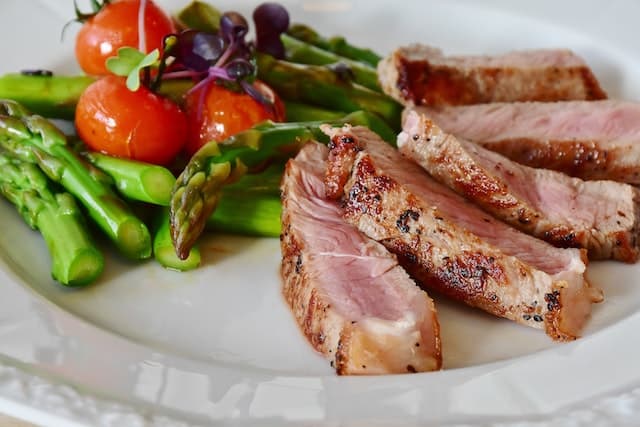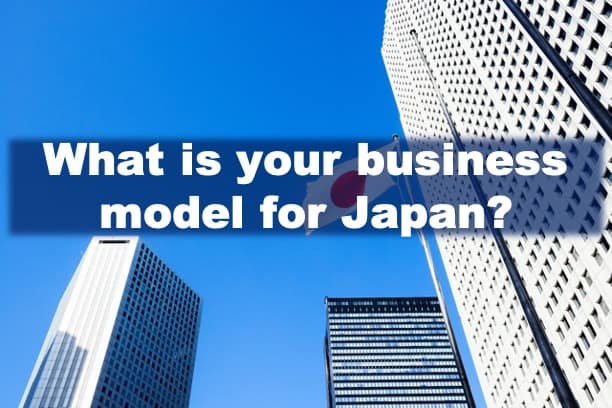What is your Business Model for Japan?
Recently, I got a question from a follower on my LinkedIn profile. The follower wanted to know about my Japanese business model. However, I think I may have disappointed him with my answer. Business models in Japan, are not much different from anywhere else. There are no secrets you can copy and become successful in Japan overnight.
The basic business principles are the same in Japan as anywhere else. You either have a good product, a product with high demand in Japan, a good concept, a good network or have strong sales and marketing skills or something else. This often needs to be combined with the ability to understand and follow Japanese business practices. Good human behaviour is still very much valued in Japan. Be polite, show respect, don’t try to cheat your customer, be trustworthy, take responsibility for what you sell, follow up and make sure your customer is happy with your products or services. You are not done, just because you got your payment. Don’t run away from a complaint.
For the last 15 years, I have been working mainly with commodity products, like food exports from Europe to Japan. This means there are many competitors who can offer the same products. You basically compete on price only.
In recent years, the pork industry has been hit by animal diseases like African Swine Fever (ASF), PDE etc. ASF turned the pork industry upside down for a while, as China suddenly needed an unbelievably large quantity of pork. Needless to say, if you were an exporter of pork, you could make a fortune by forgetting your Japanese customers and exporting your products to China. You could argue, it’s simply a question about supply and demand.

Japan needs pork too and it imports 50% of the meat it consumes. Japanese don’t have any preferences regarding whether the pork should be from the US, Canada, Mexico or Denmark. They simply want the best deal, meaning the cheapest product. So, there are not a lot of business models to consider. Either you have a product you can sell for a competitive price and a network of importers who can import the product, or you don’t. This is the situation for commodity products. You cannot copy this, rather it’s essential to have a network of suppliers and buyers.
The pork industry is unique, by the way, at least in terms of the import duty system. There is a system called “the gate price system”. This system stipulates a kilogram of pork, has a value of 524 JPY when imported. If it is imported for less, you have to pay the difference in import duty. Even if you are lucky and can purchase pork for 450 JPY per kilo, you will have to pay the difference of 74 JPY in import duty. This system is complex, and it has been changing in the last few years. That’s why it is something you need to consider if you want to start exporting pork to Japan. The system was implemented in 1974 and continued until the implementation of the latest EPA (Economic Partnership Agreements) treaty.
For pork, you may think that you won’t be able to negotiate anything with customs in Japan. But did you know that you can actually negotiate with customs?
As an example, in 2022, I had a customer who exported another commodity product to Japan. When we sat down to have a chat, he was complaining about the high tariffs which made his product less competitive. He had a nice business with Japan, but the customs duty of 15% made it less attractive. So I promised to look into it for him. I studied the product, read about possible scenarios, went to customs and negotiated the duty down to 0%. Yes, it’s possible, but it requires some experience since customs are not happy at all to negotiate anything. Especially, something which has previously been imported for a specific tariff. So, it is a very delicate matter, and you need to know how to approach it.
So, when people ask about my business model, it is simply a long journey with Japan. Soon it will be 30 years of experience, starting up businesses, with or without success, working for Danish and Japanese companies. Each time I started something up, I learned many new things. I got to develop my network and got acquainted with more companies and their products and the issues surrounding that particular industry.
Part of my business model is of course networking with the companies I have had the chance to know during the past 30 years. Occasionally, we meet and talk, have a beer or go out for dinner together. It is much easier to ask your network when you need an introduction to somebody or you need information about an industry if you have spent the time, effort and money on maintaining the network. It’s a 30-year-long “give and take” kind of thing…
It is much more efficient to have experience and network in Japan, than having an MBA and no network or experience. So, my business model for Japan is keeping my network relevant and up to date, expanding my network, gaining experience day by day, and progressively learning about new industries, products and companies. You can’t copy it. At a minimum, it will take you at least 30 years and native Japanese language skills. Plus, the ability to pivot to a new industry when needed, and the ability and willingness to constantly learn new things. Then finally, never give up and be willing to do what it takes, even when the odds may be against you.
Personal profile: https://memorizeitall.wixsite.com/kim-c-b-pedersen
Business profile: https://www.asiatradeadvisors.com/

